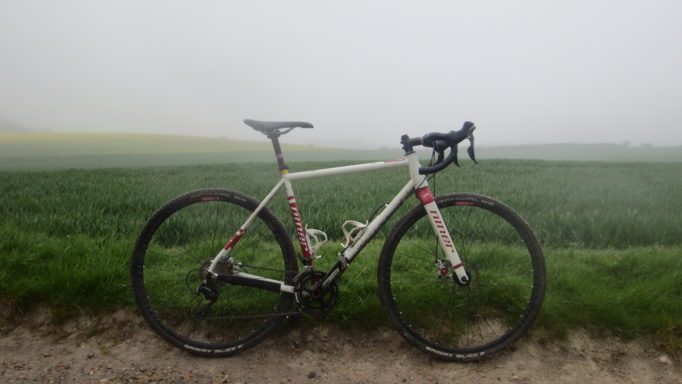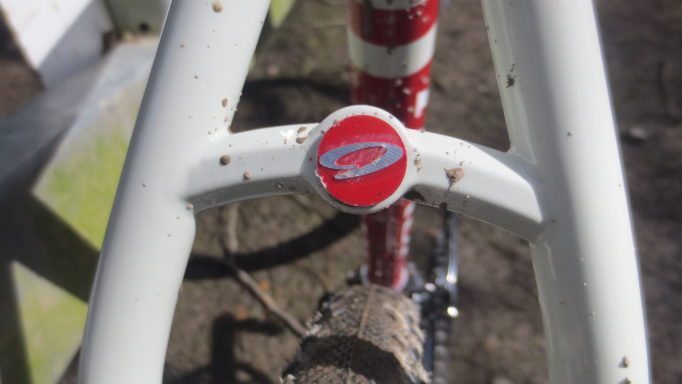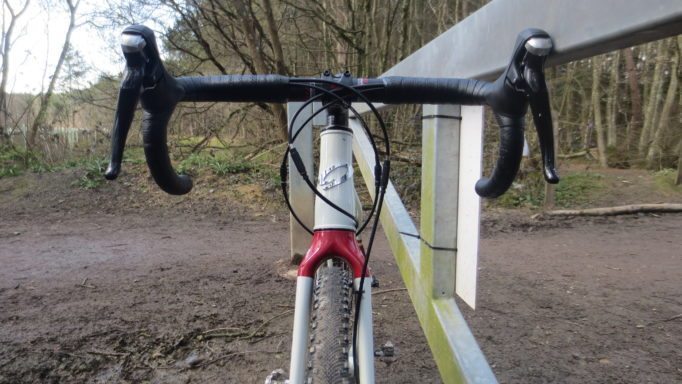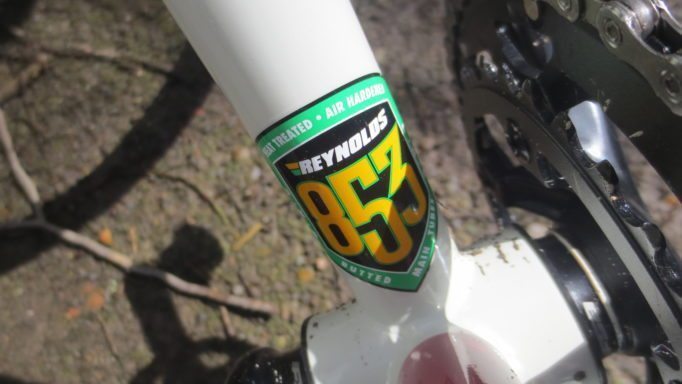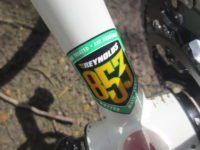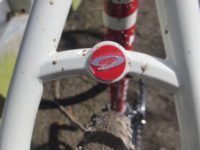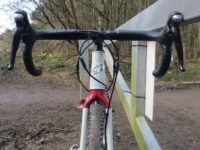Niner RLT 9 Steel Review
Niner RLT 9 Steel Review
Mark Tearle
Niner RLT 9 Steel taking the road less travelled.
Adventure bikes: Some would argue that whenever you swing your leg over the top tube of a bicycle then you’re on an adventure, so what does ‘Adventure Bike’ mean? Essentially it is a drop bar bike that you can take anywhere – they’re an all-road bicycle, with the word ‘road’ being a very loose term.
This niche is hard to define. It’s definitely not a road bike and definitely not a cyclo-cross bike – it has strong parallels with gravel bikes, possibly even synonymous; drop bar, disc brake, long and low slung geometry; slacker angles, low bottom bracket, long wheel base and chain stay length, taller head tube and clearance for wider tyres. A monster ‘cross bike if you like.
Designed to be ridden for hours and hours, or even days and days, built around stability, comfort and endurance for when the tarmacadam road turns to loose gravel substrate: The Niner RLT 9 Steel is Niner’s answer to this particular niche.
With a burgeoning appetite for this type of bike, pushed, in part, by the popularity of US style gravel grinder events, and the rise of gravel and longer distance cyclo-cross events closer to home, how does the Niner RLT 9 Steel compare?
There’s more going on with this bike than, at first sight, meets the eye with technology borrowed heavily from Niner’s MTB expertise. The tubing is TIG welded Reynolds 853 – strong (with 853 especially renowned for it’s strength at the welds) and relatively lightweight, matched with a ‘gravel tuned’ Niner carbon fork. All fairly standard so far, but look closer: the headtube is tapered steel, the bottom bracket can accommodate a single, double or even a triple chainset option and the rear of the frame is engineered for a 142x12mm thru-axle. New versions of the frame now come with a 15mm thru-axle carbon fork.
The geometry of the frame is more relaxed than my cyclo-cross frame, but not so slack that it becomes lumbering. The key points to look at in comparison to your cyclo-cross rig is the length of the wheelbase, the length of the chainstay, the bottom bracket drop, head tube height, stack and reach and, usually, the head tube and seat tube angle – differences between the Niner RLT 9 Steel and my, Ritchey Swiss CX disc, cyclo-cross bike are the wheelbase, 2 cm longer, the chainstay, 1cm longer, and the bottom bracket drop, over 7mm lower. Where it differs quite a lot is the height of the head tube, 3cm longer and the frame stack, 1.6cm higher, and there’s a lot more clearance in the rear triangle and the forks for fatter tyres – the seated position feels a lot higher and more upright and the result of the geometry and the engineering touches mentioned above produce an incredibly stable and comfortable ride.
At 10.8kg (23.8lb), according to the scales in the LBS, for this size 53 ‘2 star’ Shimano 105 build, the bike is in the middleweight category. It’s not until you learn of this weight that you begin to feel it – an odd psychological phenomenon as highlighted in my initial remarks about the bike in the preview article – but like middleweight boxers it still has enough agility to be reasonably fast, though riding with a friend recently, he on a traditional CX bike made of carbon and me on the Niner, there was a distinct difference in performance in terms of keeping up on the hills (and I am not putting this down to my fitness). No doubt with the right components this weight can be dropped by a couple of hundred grams or maybe even a kilogram, but it’s not really a racing bike – you can race on it, of course, but it truly comes into its own on long all-day type adventures.
If I had ridden the Dirty Reiver on my own cyclo-cross bike, though steel with a carbon fork too, I would have felt very beaten up by the end. My wrists where the only thing that really suffered on that ride, but with a more aggressive position on the bike it would have had them feeling a lot worse, and not forgetting what that does to your back. My CX bike is great for an hour round a muddy field and absolutely ideal for terrain like the South Downs, where the hills are short and punchy and require a bit of Saut de Basque to progress to the top, however, in direct comparison, climbing the same hills on the Niner RLT is a steady, spinny and seated affair. The carbon fork looks quite burly, but the interaction with the wheels, the tapered headtube and headset bearings produces a real sweet spot for comfort whilst riding, which is a real plus for long distance endurance riding.
Given the opportunity I would have slung some bags on the bike and taken it on a bivvy adventure – if I ever considered buying one myself then this would probably be its primary role, though sadly I don’t have the luxury of buying a bike just for that purpose. I actually don’t do bivvying, but I probably would do if I had this bike. Long distance, solo bike packing, where you pack everything you need on the bike for a few days, seems very appealing and this is the perfect bike for it. There’s plenty of space in the bike frame, on the bars and hanging off the seat post for luggage and with 3 bottle mounts you could survive on your own just fine for a few days. Not that touring around the UK is about survival.
It’s an adaptable and capable bike though and for that it is a serious consideration. The 53cm I had was spot on for me, but for that little extra pluck in the ride I’d size down I think. The 11sp 2 star 105 build is durable, affordable if replacement parts are required, and likely to last without any issues provided the bike is regularly serviced. The BB5 brake calipers were a pleasant surprise; efficient and with excellent stopping power, aided by the Jagwire compressionless brake cable housing, though they’re still ugly as sin – there’s better cable accentuated brake calipers out there, so if I did buy this bike they would be the first to go. The wheelset, Niner’s own CX alloy wheels, are sturdy, with good bearings and reasonably light weight – with the addition of a 15mm front thru-axle I imagine these wheels would give that little bit more, working with the fork to make the bike more comfortable.
The trouble is that I just don’t need a bike like this. The terrain around here, where I do most of my riding (naturally), favours a more nimble machine and I am finding it really hard to justify the price, which for the 2 star build the RRP is £2299. It’s not unreasonable, but then it is not attractive enough to get me to part with my money. Bung full cable Ultegra on and lose the BB5s and I might reconsider. The unique selling points of this frame, which are not lost on me, are the Niner proprietary carbon (and gravel orientated) thru-axle fork, and the rear 142x12mm thru-axle and tapered head tube – I can’t think of any other steel frame available on the UK market quite like it, and of course the fact that it is a handbuilt TIG welded frame made of Reynolds 853 tubing – it really will last you a long time. For that it fully justifies the £1499 price tag on the frame/fork only option.
It’s a great bike, a really great bike, ideal for events like the Dirty Reiver or a weekend of mixed terrain riding in the more rugged parts of our country, bike packing, commuting, but not necessarily for the green chalky downland in the South East of England, and that price is a sticking point for me. I really did enjoy riding it, and, despite the price, all I can see is possibilities for the bike and bike adventures.
My slight objection to the price doesn’t stop me wanting one.
- Niner RLT 9 Steel
- Reynolds 853 tubing for the Niner
- BB5 brakes, were powerful and efficient stoppers, but not the prettiest?
- Plenty of mud clearance here
- A tapered headset aids front end stiffness on the Niner RLT 9 STeel
- The Niner RLT 9 Steel, looking moody on the South Downs
- Waiting to go
- Niner RLT 9 Steel chainstays
- Tapered headset
[rps-include blog=127.0.0.1 post=29263]


